North Carolina’s Crystal Coast: Cape Lookout National Seashore and Lighthouse
Last updated on August 14th, 2018 at 06:56 pm
Wide beaches and wild horses await visitors to North Carolina’s Cape Lookout National Seashore, covering more than 50 miles on three undeveloped barrier islands off its central shore.
Access to the national park, which is a part of the Southern Outer Banks, often referred to as the Crystal Coast, is only by commercial ferry or private boat.
Our group boarded the Island Express Ferry — the only ferry authorized by the National Park Service to drop off at Cape Lookout Lighthouse and Shackleford Banks — at the Harkers Island Visitors Center for a 15-20 minute ride. (Rates: $16 Adults/Campers (includes backpack & small carry-on) $5 additional carry-on $9 Children (11 and under) $7 Pets)
* Ferry service is also available from the town of Beaufort to the west end of Shackleford Banks.
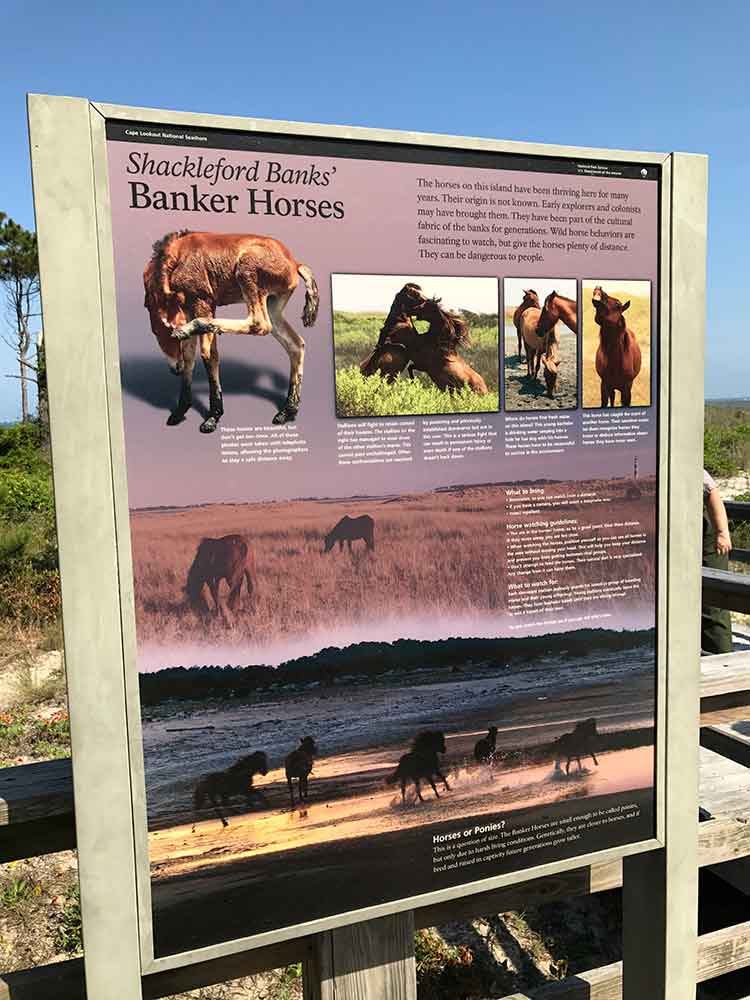 Passengers can elect to disembark at Shackleford Banks, where about 100 wild horses, called Banker horses, have roamed the barrier islands for hundreds of years. Although their origins can’t be totally verified, historians believe they were brought to the area by Spanish explorers during the 16th century, as a result of shipwrecks, or by early English colonists. (Read more about their history and characteristics here.)
Passengers can elect to disembark at Shackleford Banks, where about 100 wild horses, called Banker horses, have roamed the barrier islands for hundreds of years. Although their origins can’t be totally verified, historians believe they were brought to the area by Spanish explorers during the 16th century, as a result of shipwrecks, or by early English colonists. (Read more about their history and characteristics here.)
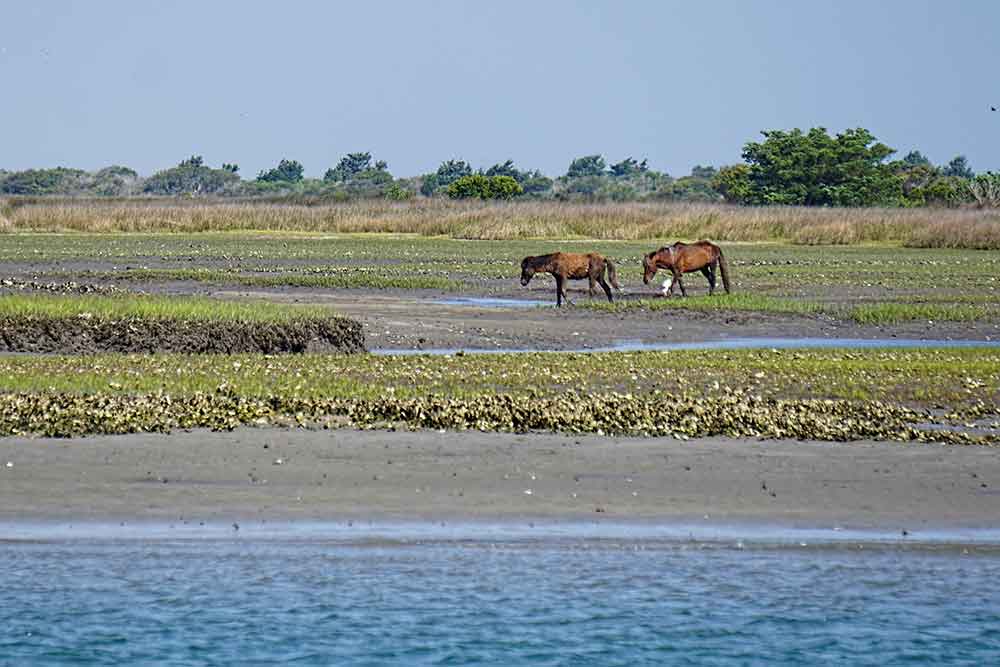 We were only able to see them from afar through our zoom lenses, but I’d love to return to spend an afternoon enjoying the beach and trying to get a closer look at the horses as they graze and interact.
We were only able to see them from afar through our zoom lenses, but I’d love to return to spend an afternoon enjoying the beach and trying to get a closer look at the horses as they graze and interact.
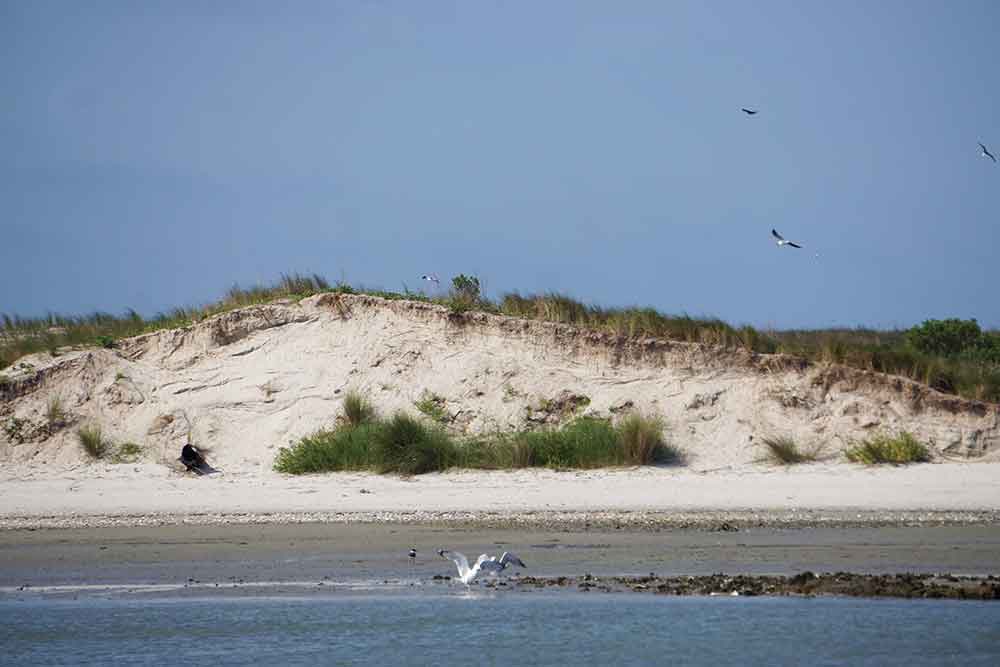
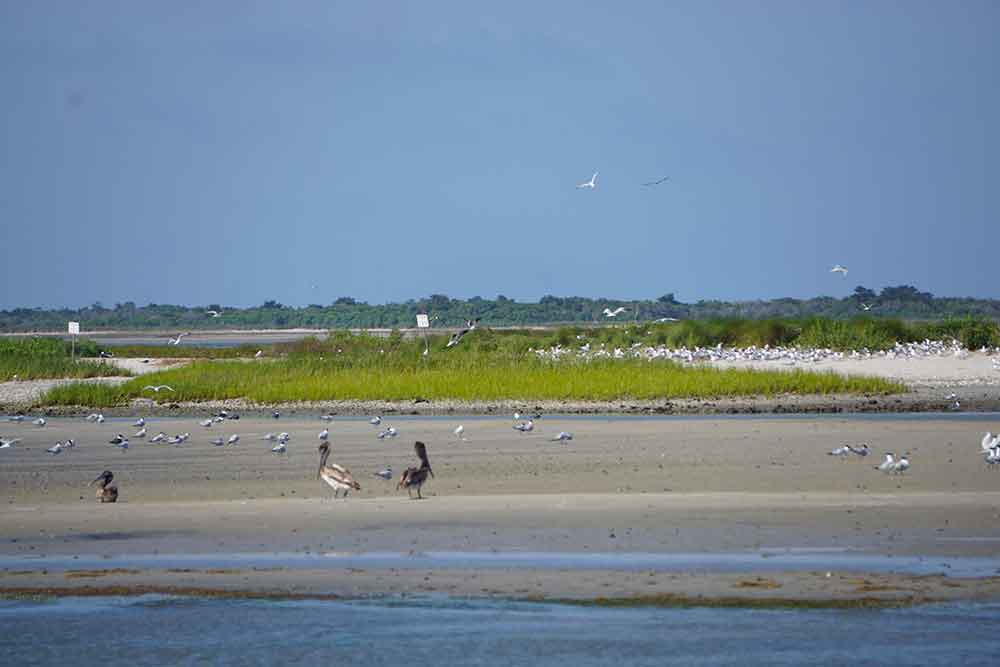 Birders will love visiting this area, too, since more than 250 species of birds have been identified within Cape Lookout National Seashore during various seasons.
Birders will love visiting this area, too, since more than 250 species of birds have been identified within Cape Lookout National Seashore during various seasons.
Download a brochure listing Birds of Cape Lookout National Seashore here: 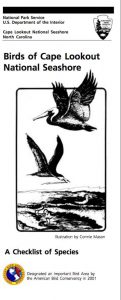
Cape Lookout Bird List Brochure PDF
Our group’s point of disembarkation was at the Cape Lookout Lighthouse. It is known as the Diamond Lady for its distinctive black-and-white diamond shaped pattern. We learned from the volunteer who oriented us to the lighthouse’s history that its checkered markings show direction: the center of the black diamonds point north-south, while the white diamonds point east-west.
The Cape Lookout Lighthouse is 163 feet tall and has been in operation since 1859. It replaced an earlier, shorter lighthouse, built in 1812. Other interesting facts:
- The Cape Lookout Lighthouse became fully automated in 1950 and flashes every 15 seconds.
- Its light can be seen from at least 12 miles out to sea and up to 19 miles from land.
- There are 207 steps to the top of the lighthouse, the equivalent of climbing a 12-story building.
We had a scheduled time (every 15 minutes) to make the climb since only 10 visitors are allowed to be on the top at one time.
Regular admission is $8.00; children are $4.00; Seniors (62 and over) are $4.00. The lighthouse is closed for climbing on Mondays and Tuesdays, but is open other days from the third week in May to the third weekend in September.
The climb is considered to be strenuous. Although I made it with no problem, I was glad there were several landings with windows and a breeze to take brief breaks on the way. The entrance to the top is through an oval-shaped hatch. We were blessed with a sunny, clear day with light winds so conditions were near-perfect to take in spectacular 360° views.
Before the ferry returned to take us back to Harkers Island, we had a little time left to make our way to the beach via a wooden walkway that begins at the Visitor’s Center. Beachcombing for shells and other treasures washed to shore is one of my favorite activities, so I was in my element as I strolled along the wide expanse of sand that stretched as far as the eye could see.
I picked up a few intact shells and several broken pieces that had been smoothed by time and tide. Some quahog clam shell pieces with partial purple coloration were identified by the park ranger on duty as the type used by Native Americans to produce shell beads known as wampum, which were then fashioned into belts and pendants. White beads from the whelk shell were also used. Wampum has been called America’s first money, a type of currency used to barter commodities.
If we’d had more time, I would have loved to have caught the beach shuttle, which departs hourly from the Cape Lookout Lighthouse for transportation to the Cape Lookout Point, a well-known destination for great shelling. Narration to and from the Point provides education about the Cape’s history and ecology. Visitors are allowed to collect up to two gallons of uninhabited shells per person, per day for non-commercial use. (Shuttle fee: $10/RT, age 3 and up)
Keep your eyes peeled for North Carolina’s state shell, the Scotch bonnet. (This is a Scotch bonnet I found in the past but not in North Carolina.)
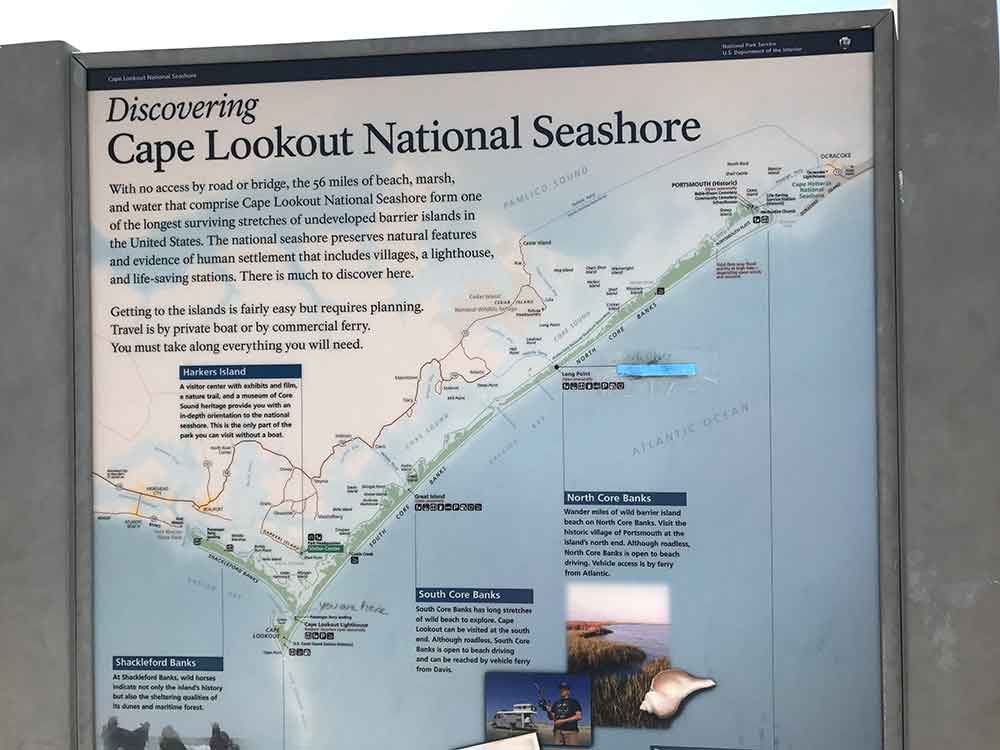 For more information on planning your visit to the Cape Lookout National Seashore, including camping on the beach or staying in one of the rustic, wooden cabins at Long Point and Great Island, visit the National Park Service website.
For more information on planning your visit to the Cape Lookout National Seashore, including camping on the beach or staying in one of the rustic, wooden cabins at Long Point and Great Island, visit the National Park Service website.
My recent visit to the Crystal Coast with other travel writers, following the annual conference of the North American Travel Writers Assn. (NATJA) conference in Chapel Hill, North Carolina, was sponsored by Crystal Coast North Carolina.
All photos © Debbra Dunning Brouillette
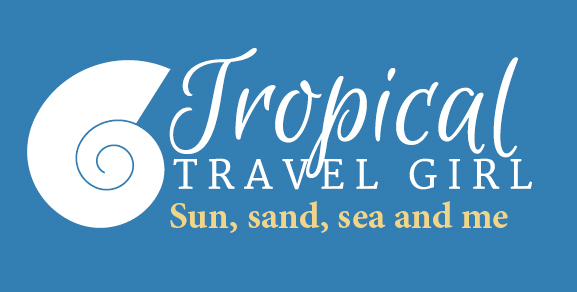

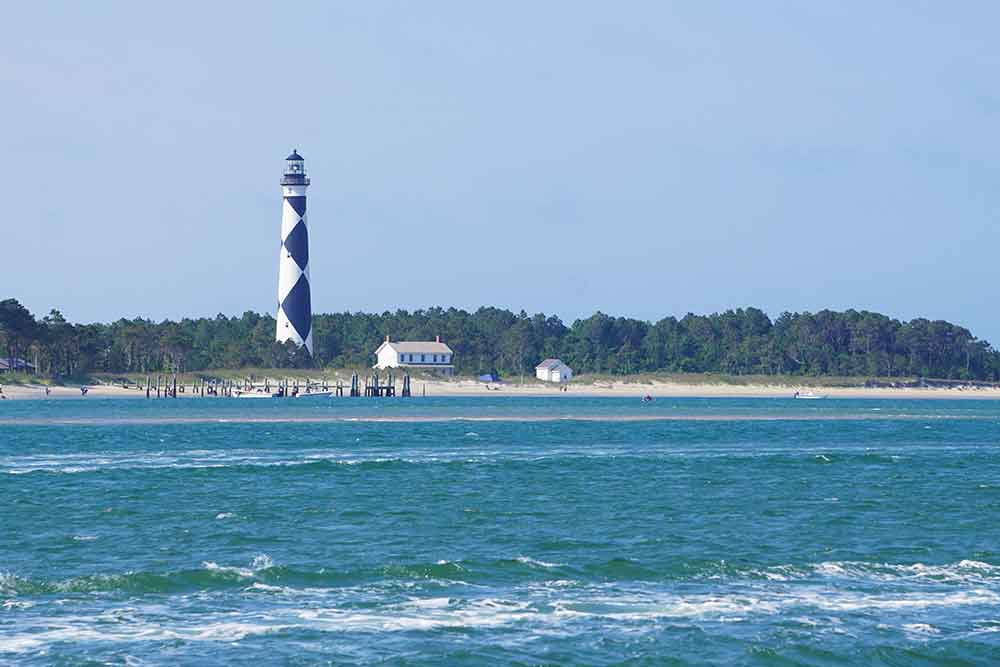
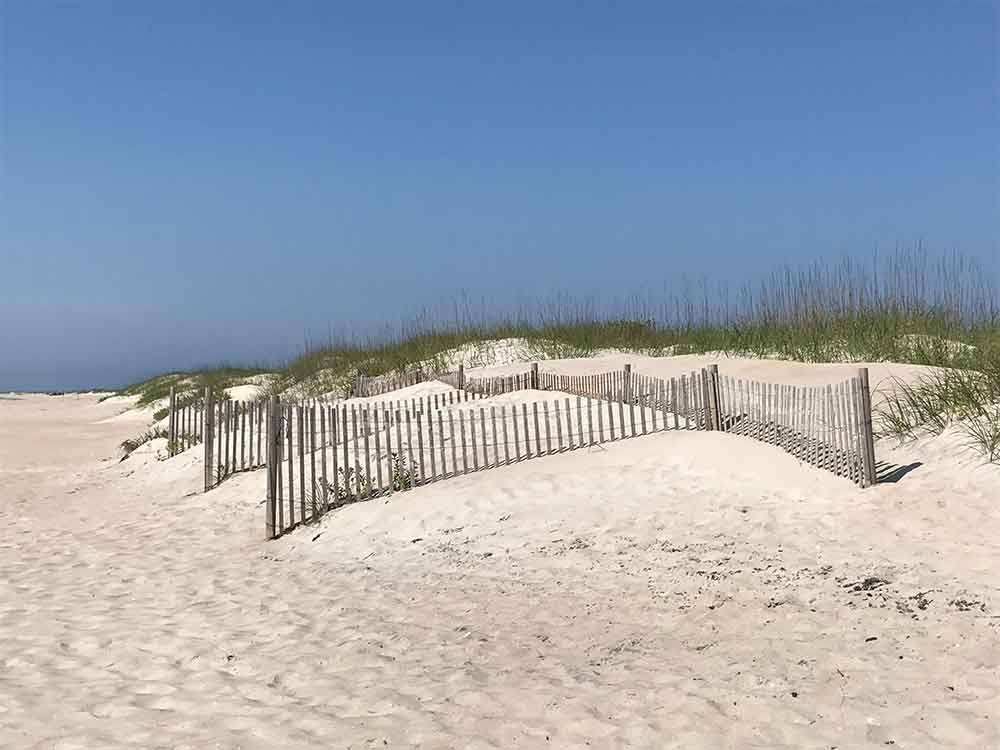
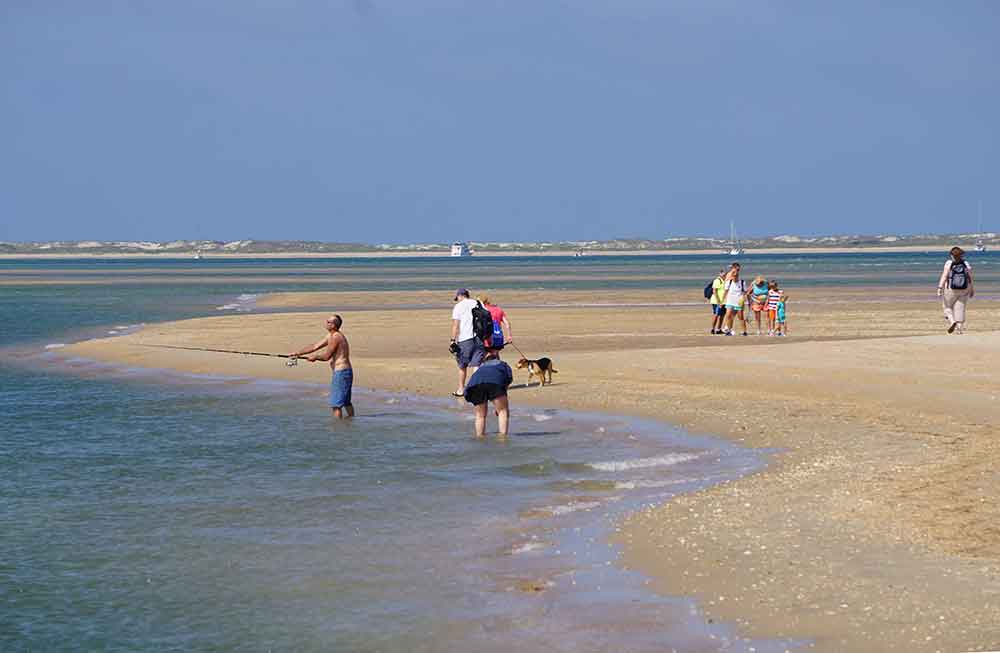
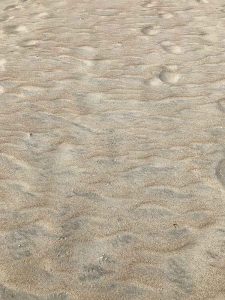
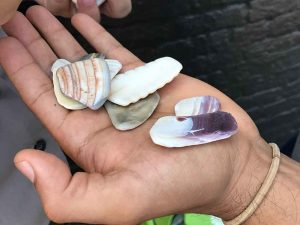
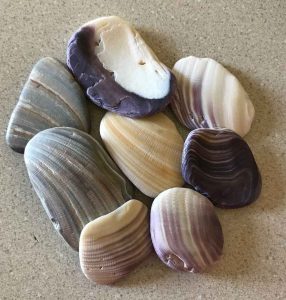
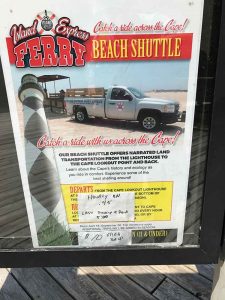
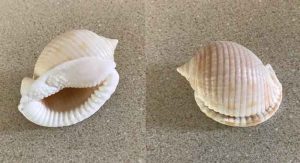
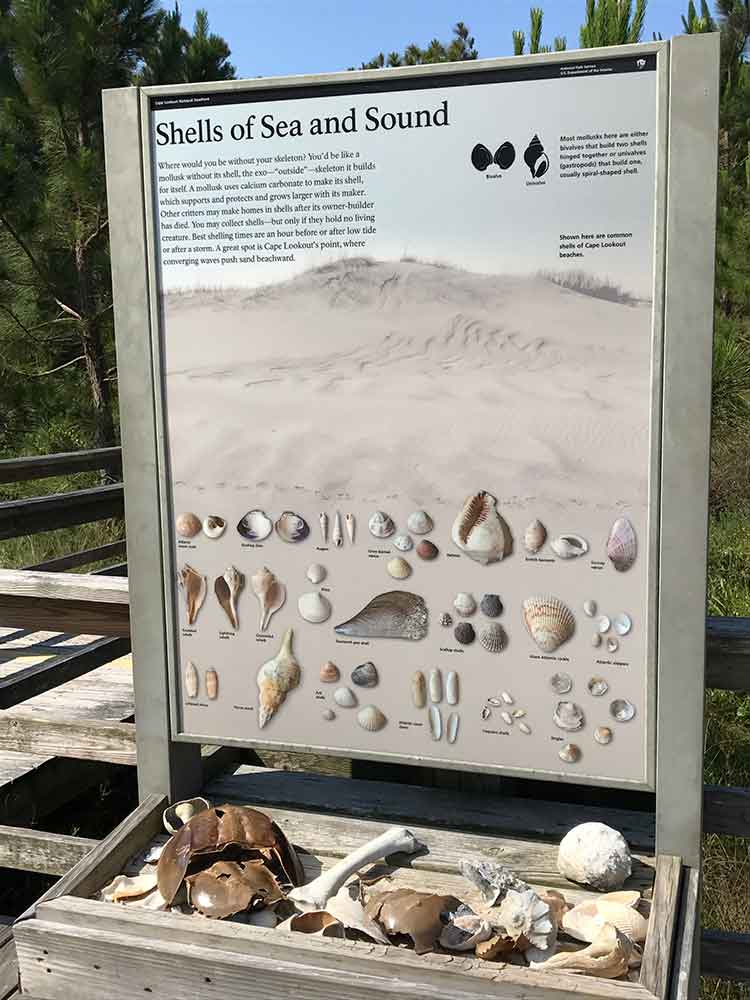
ok. I am ready to go!
And I’m ready to go back! We could go wreck diving off the coast, too, Tam! 🙂 It’s supposed to be great there.
Very comprehensive post about North Carolina’s Crystal Coast, Debbie. I’m kind of jealous, seeing you all on that ferry… I could have been there with you too, seeing the wild horses and collecting shells. Cape Lookout Lighthouse looks very picturesque. Reminds me about the one I’ve seen last summer in the little village of Landsort, in Sweden.
Thanks, Anda! I wish you could have been with us. It was a beautiful day to climb the lighthouse and walk the beach!
Great article. Reminds me a little of Cumberland Island. Makes me want to go there.
Thanks, Katy! I think you’d really enjoy Cape Lookout National Seashore. I just looked up Cumberland Island and see it is a barrier island off the coast of Georgia that is also only accessible by boat. There is a lot to explore along coastal America!
Henk and I are planning a visit to the Outer Banks this fall, so I’ll keep this on the list for sure!
It was my first time to this area and I would love to go back to explore in more detail. I think you’d enjoy visiting Cape Lookout!
Debbie, you have made me VERY sorry that I did not attend the NATJA conference. I had no idea North Carolina had such a magnificent coastline with shelling AND wild horses! I just had too much on my plate art this time to make it there this spring, but hopefully, a future opportunity will come up. Cheers!
I wish you could’ve been there, too, Doreen! It was my first time to visit North Carolina’s Crystal Coast (or southern part of the Outer Banks) and I was impressed! It’s a lovely area that I hope to revisit. Maybe you can plan a trip there, too!
I’m so glad you got to see some of the Outer Banks! It’s so lovely there. I love the beaches, and the lighthouse. I haven’t been in a little over 4 years, and now I can’t wait to get back again!
Yes, Patti, I am glad, too, and now I’m ready to go back and see more of the Outer Banks and revisit the areas I just got a taste of! As always, there is so much to see and do in our beautiful country.
I keep coming back to look at your beautiful shots, Debbie. I’m missing our time spent on the Crystal Coast. Definitely, want to return and spend time on Shackleford Banks to see more of the wild horses.
What a great weekend we had! I’m so glad you’ve enjoyed my photos. I’d love to go back to the area, too, Priscilla, to get closer to the wild horses and do more shelling.
Fantastic. I was just in the Outer Banks a few days ago, near the Bodie Island lighthouse. It is a gorgeous part of our world.
Thanks, Charles! I’m glad to have discovered North Carolina’s coast and hope to visit Nags Head and the northern part of the Outer Banks where Bodie’s lighthouse is located.
I’d love to return to the Outer Banks, my husband and I had a romantic long weekend there when we were first married. Love the pattern on the lighthouse-it’s an unusual one. The views from the top must have been spectacular.
Yes, we couldn’t have asked for a more beautiful, clear day to take in the views! Sounds like it is time for a return visit. I hope to go back for a longer stay!
Now I know where I want to head next time we do a beach vacation! Inspiring and evocative report, Debbie! Looks like my kind of ocean paradise!
Thank you, Irene! Being able to spend a weekend in this part of North Carolina’s Outer Banks was delightful, just not long enough! I’d highly recommend vacationing here.
Pingback: How I display my sand collection and shells – Tropical Travel Girl